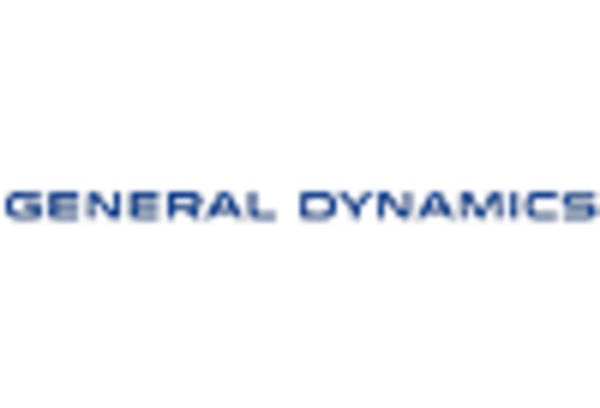Increased Defense Budgets
The Military GNSS GPS Device Market is experiencing a notable surge due to increased defense budgets across various nations. Governments are prioritizing modernization and technological upgrades in their military capabilities, which includes investing in advanced GNSS GPS devices. For instance, defense spending has seen a consistent rise, with many countries allocating a significant portion of their budgets to enhance navigation and positioning systems. This trend is likely to continue, as nations recognize the strategic importance of accurate positioning in military operations. The demand for sophisticated GNSS devices is expected to grow, driven by the need for enhanced situational awareness and operational efficiency in defense missions.
Rising Geopolitical Tensions
The Military GNSS GPS Device Market is significantly influenced by rising geopolitical tensions around the world. As nations face increasing threats from adversaries, the need for reliable and precise navigation systems becomes paramount. Military forces are compelled to adopt advanced GNSS GPS devices to ensure operational readiness and effectiveness in various scenarios. The ongoing conflicts and territorial disputes have led to a heightened focus on military preparedness, thereby driving the demand for advanced positioning technologies. This environment suggests that the Military GNSS GPS Device Market will continue to expand as countries seek to bolster their defense capabilities in response to these challenges.
Emerging Threats to Navigation Systems
The Military GNSS GPS Device Market is also shaped by emerging threats to navigation systems, including jamming and spoofing. As adversaries develop capabilities to disrupt GNSS signals, military forces are compelled to invest in more resilient and secure navigation technologies. This has led to an increased focus on developing anti-jamming and anti-spoofing features in GNSS GPS devices. The need for robust navigation solutions that can withstand these threats is driving innovation and investment in the market. Consequently, the Military GNSS GPS Device Market is likely to see a rise in demand for devices that offer enhanced security features to ensure operational continuity in contested environments.
Integration of AI and Machine Learning
The integration of artificial intelligence (AI) and machine learning into the Military GNSS GPS Device Market is transforming the landscape of military navigation systems. These technologies enhance the accuracy and reliability of positioning data, enabling military forces to make informed decisions in real-time. AI algorithms can analyze vast amounts of data from GNSS devices, improving situational awareness and operational efficiency. As militaries increasingly adopt these advanced technologies, the demand for sophisticated GNSS GPS devices is expected to rise. This trend indicates a shift towards more intelligent systems that can adapt to dynamic environments, thereby enhancing the overall effectiveness of military operations.
Growing Demand for Precision Agriculture
The Military GNSS GPS Device Market is witnessing a growing demand for precision agriculture technologies, which are increasingly being adopted by military organizations for logistical and operational purposes. The ability to utilize GNSS GPS devices for precise land navigation and resource management is becoming essential for military operations, particularly in support roles. This trend is indicative of a broader recognition of the value of accurate positioning in various military applications. As militaries seek to optimize their resource allocation and operational efficiency, the integration of precision agriculture technologies into military GNSS GPS devices is expected to drive market growth, reflecting a convergence of agricultural and military needs.

















Leave a Comment